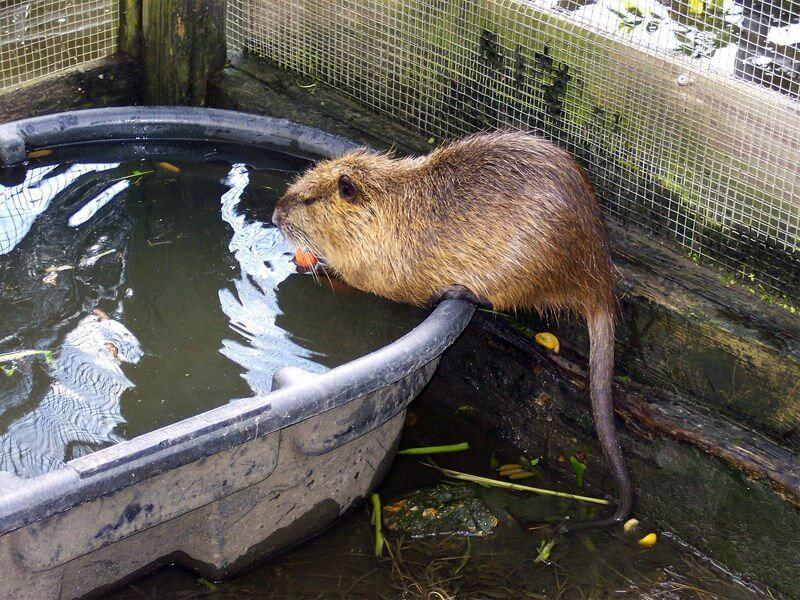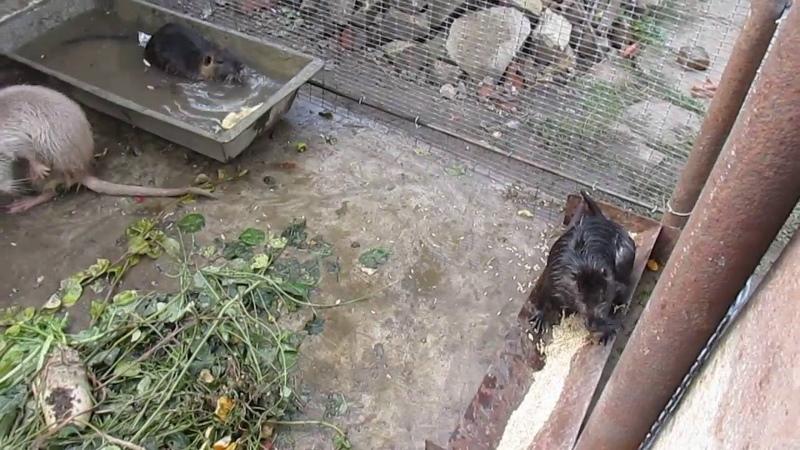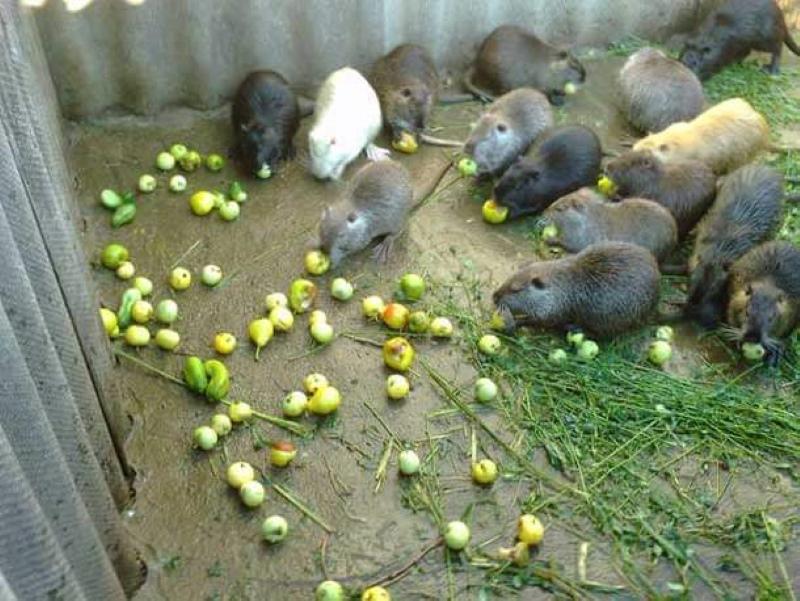Breeding nutria at home - important points for beginners
 Their meat is considered no less dietary than that of rabbits, and shiny skins can also be realized. Thus, you will receive double profits and in just a year you will return all investments in the cultivation of nutria at home. These animals, resembling large rats with beaver teeth, feed mainly on plant foods. If you have a vegetable garden, then this is an added bonus, because nutria love both grass and vegetables, but they also gladly eat grains. Taking care that the animals do not freeze, eat well and, preferably, have access to water, you will provide them with comfortable conditions. This means that the animals will quickly gain weight, overgrowing with a chic fur coat. And they will actively multiply and "work" to expand your farm.
Their meat is considered no less dietary than that of rabbits, and shiny skins can also be realized. Thus, you will receive double profits and in just a year you will return all investments in the cultivation of nutria at home. These animals, resembling large rats with beaver teeth, feed mainly on plant foods. If you have a vegetable garden, then this is an added bonus, because nutria love both grass and vegetables, but they also gladly eat grains. Taking care that the animals do not freeze, eat well and, preferably, have access to water, you will provide them with comfortable conditions. This means that the animals will quickly gain weight, overgrowing with a chic fur coat. And they will actively multiply and "work" to expand your farm.
In nature, nutria prefer to settle near water bodies, since they spend a lot of time in the water. But most of them still live on land, looking for vegetation for themselves. The total life span of animals is about 6 years, including in captivity.
Breeding nutria at home - where to keep animals

You can keep homemade nutria by specially equipped for this:
- Aviary. Ideal for summer maintenance, as well as for southern regions with warm and short winters. The aviary should have a pool, nest houses and separate compartments for animals of different ages.
- Cells... In warm regions, you can put it right in the aviary so that there is an open walk. In the middle lane, they practice year-round cage keeping with placing them indoors. The cells themselves should be made of strong material that the teeth of the nutria cannot damage. Optimal is to weld them from metal.
- Houses, preferably brick or concrete. If you insulate them, then in winter the nutria will be able to live there. Around the houses they equip a walking area, blocking it with a net.
- The pit, having concreted the floor and sheathed the walls with slate. For the winter they put insulated houses there.
Since nutria are semi-aquatic animals, the presence of a reservoir is highly desirable. Without it, they do not grow so quickly and can get sick.
How to feed nutria
 The main part of the diet of animals is plant food, so it will be easiest to feed the nutria in the summer. During this period, nutria can be given:
The main part of the diet of animals is plant food, so it will be easiest to feed the nutria in the summer. During this period, nutria can be given:
- tops of carrots and beets;
- branch feed (fruit and some deciduous trees);
- grass from the swamp (reeds, reeds);
- green mass of leguminous crops;
- vine vine;
- vegetables;
- fruit.
 In winter, the diet of nutria should consist of harvested hay (dandelions, quinoa, coltsfoot), twigs, leaves and straw. They continue to give vegetables that are stored in winter: pumpkin, Jerusalem artichoke, beets, carrots.To gain weight, nutria also need grain (barley, corn, oats, wheat, millet). But most of all they love wet mash, based on soups, milk or whey. It is important that the winter diet includes all of the ingredients mentioned. Then nutria and weight will continue to gain, and the skin will have a beautiful. And by spring, healthy and strong, they will actively begin to mate.
In winter, the diet of nutria should consist of harvested hay (dandelions, quinoa, coltsfoot), twigs, leaves and straw. They continue to give vegetables that are stored in winter: pumpkin, Jerusalem artichoke, beets, carrots.To gain weight, nutria also need grain (barley, corn, oats, wheat, millet). But most of all they love wet mash, based on soups, milk or whey. It is important that the winter diet includes all of the ingredients mentioned. Then nutria and weight will continue to gain, and the skin will have a beautiful. And by spring, healthy and strong, they will actively begin to mate.